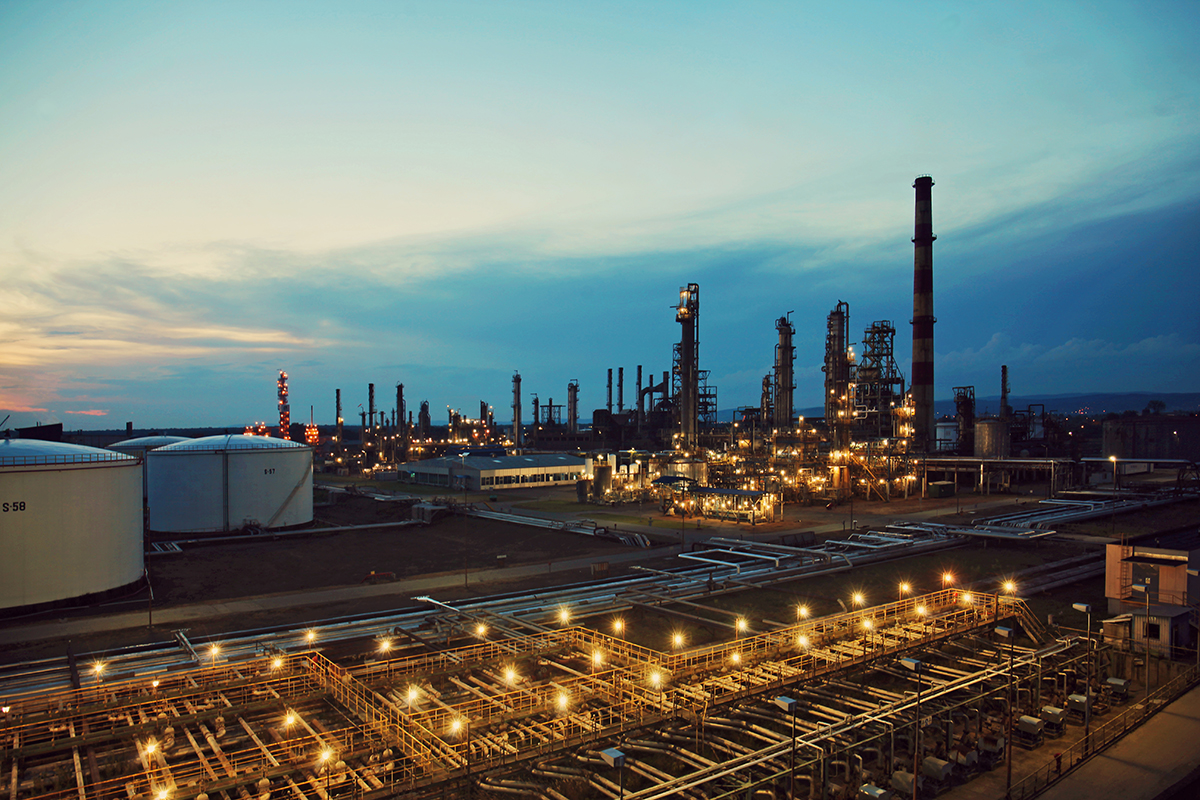Horizontal Directional Drilling process (HDD)
Investor: Crodux plin d.o.o., Savska Opatovina 36, 10000 Zagreb
Subject of the Contract: Horizontal Directional Drilling (HDD) – pulling a pipeline DN 400 (jet drill procedure) through the drilled underground tunnel under the Sava River in Slavonski Brod based on turn-key concept
Contractor: Feromihin d.o.o., Moslavačka 22, 10315 Novoselec
Introduction to work: 2019-05-04
Planned commissioning: 2021-04-01
Project location: under the Sava River, in Slavonski Brod
We proudly announce that the company Feromihin on March 25, 2021, has successfully performed the Horizontal Directional Drilling (HDD) process. This is done by pulling the DN 400 pipe under the Sava River in Slavonski Brod, to directly supply natural gas to the Oil Rafinery Brod.
Horizontal Directional Drilling (HDD) process
The procedure includes converting pipelines used for the transportation of petroleum products into the direct natural gas pipeline, connecting it to the new pipeline laid by the HDD. The procedure was performed on the river border between Republic of Croatia, in Brod-Posavina County, southwest of Slavonski Brod and Bosnia and Herzegovina, Republic of Srpska, south of Brod.
In the initially planned reconstruction of an existing suspension bridge over the Sava River, which was used for transportation of petroleum products, a decision was made on pulling a new 16″ pipe (DN 400 – jet drill procedure) under the Sava River using Horizontal Directional Drilling (HDD) technology with the help of radio locating system to connect the Oil Rafinery Brod to the gas transmission system of the Republic of Croatia. A preliminary design has been prepared for the gas pipeline under the Sava River (Mašinoprojekt – Bureau for Mechanical Engineering and Energy d.o.o.).
New gas pipeline under Sava river
The new gas pipeline under the Sava river is approximately 15-30 m upstream from the existing product pipeline bridge. The pipeline was constructed at a minimal depth of approximately 10 m below the Sava riverbed, in the length of approximately 390 m.
According to API 5L X52M, steel pipes, wall thickness of 6,4 mm and 7,9 mm were used to construct the pipeline. The gas pipeline will be connected to gas pipeline block stations, one on each side of Sava river, Block station Sava and Block station Oil Rafinery Brod.
Horizontal Directional Drilling, with the help of radio locating system, is performed using specialized machine and tools. The drilling rig was located in the territory of the Republic of Croatia, where the piloting and well reaming to the required diameter for the insertion of the steel pipe was performed.
After the wellbore was reamed to the required diameter, DN 650, the HDD rig was transported to the Oil Rafinery Brod, from where it pulled the 390m of DN 400 pipeline which was welded, tested and isolated using STOPAQ isolation in the territory of the Republic of Croatia.
The estimated amount of drilling fluid (bentonite drilling mud), which depends on the diameter of the well, was about 200 m3. The above mentioned liquid consists of water, earth, sand and bentonite. Of the 200 m3 of liquid, 100 m3 was water, 10 m3 was bentonite, and the rest was earth and sand.
Approximately 10% of the drilling mud came out in Croatia and about 90% in Bosnia and Herzegovina. Mud wells were prepared on both construction sites. They were additionally lined with waterproof material to avoid spilling drilling mud into the ground.
Description of the procedure
The HDD method (horizontal directional drilling) is used for underground, horizontal, directional drilling, with the help of radio locating system. The HDD process is economical, quickly feasible, and leaves no negative environmental consequences during or after the work. Upon completion of the drilling process, the original conditions will be restored.
The drilling process consists of three basic stages:
- Stage 1 – Pilot wellbore drilling
- Stage 2 – Expanding the drilled wellbore
- Stage 3 – installation – Pulling the pipe into the wellbore
During the first phase, a drilling head that is hollow inside and has a locator, which is then tracked, is used to drill through the ground via a drilling rig. Bentonite is injected into the hole through the drill bit from the surface. This is done to keep the borehole stable and prevent the collapse. The drilling mud removes the excess drilled soil.
After the pilot drilling is finished, the drilling head with the locator gets removed and replaced with a reamer. This backreamer was pulled back toward the drilling rig to widen the drilling hole.
During this process, the drilling pipe is added behind the reamer to keep it in center of the wellbore. This lowers the pulling forces during the pulling operation. The DN 650 backreamer was connected to the DN 400 pipeline pulled in the final phase. The pulling operation was succesfully finished in 8 hours with pipe reaching the Oil Rafinery Brod.






 Hrvatski
Hrvatski Русский
Русский العربية
العربية